
Portland Union Station is a train station in Portland, Oregon, United States, situated near the western shore of the Willamette River in Old Town Chinatown. It serves as an intermediate stop for Amtrak's Cascades and Coast Starlight routes and, along with King Street Station in Seattle, is one of two western termini of the Empire Builder. The station is a major transport hub for the Portland metropolitan area with connections to MAX Light Rail, the Portland Streetcar, and local and intercity bus services. The station building contains Wilf's Restaurant & Bar on the ground level and offices on the upper floors. It also has Amtrak's first Metropolitan Lounge on the West Coast, which is reserved for first-class sleeping car and business-class passengers.

Victoria Station was a chain of railroad-themed steakhouse restaurants. At the peak of its popularity in the 1970s, the chain had 100 locations in the United States. The firm filed for bankruptcy in 1986. The last remaining restaurant in the former chain was located in Salem, Massachusetts until it abruptly closed in December 2017.
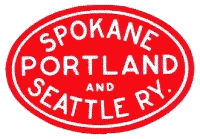
The Spokane, Portland & Seattle Railway was a railroad in the northwest United States. Incorporated in 1905, it was a joint venture by the Great Northern Railway and the Northern Pacific Railway to build a railroad along the north bank of the Columbia River. The railroad later built or acquired other routes in Oregon. The SP&S was merged into the Burlington Northern in March, 1970. Remnants of the line are currently operated by BNSF Railway and the Portland and Western Railroad.
Fred Meyer is an American chain of hypermarket superstores founded in 1922 in Portland, Oregon, United States, by Fred G. Meyer. The stores are found in the northwest U.S., within the states of Oregon, Washington, Idaho, and Alaska. The company was acquired by Kroger in 1998, though the stores are still branded Fred Meyer. The chain was one of the first in the United States to promote one-stop shopping, eventually combining a complete grocery supermarket with a drugstore, bank, clothing, jewelry, home decor, home improvement, garden, electronics, restaurant, shoes, sporting goods, and toys. The Fred Meyer division is headquartered in Portland.

Washington Square is a shopping mall in the city of Tigard, Oregon, United States. Located in the Portland metropolitan area along Oregon Route 217, the shopping complex is one of the top grossing malls per square foot in the United States, with sales of $716/ft². Opened in 1973, the mall is currently managed and co-owned by The Macerich Company, a real estate investment trust, and is anchored by Macy's, Nordstrom, JCPenney, Apple Store, and Dick's Sporting Goods.

McCormick & Schmick's Seafood Restaurants Inc. is an American seafood restaurant chain, formerly based in Portland, Oregon. As of July 2021, the company operates 26 locations in the United States and 5 Canadian locations that operate under the Boathouse name. A sale to the parent company, Landry's, Inc., was completed in January 2012. Landry's corporate headquarters in Houston, Texas now manages all restaurant operations.

G.I. Joe's was a privately owned retail chain for sporting goods, ready-to-wear clothing, and auto parts; that operated stores in the Pacific Northwest region of the northwestern United States.
Brian McMenamin is an American businessman in the state of Oregon. A native of the state, he and his older brother Mike McMenamin founded the McMenamins restaurant and brewpub chain in 1983. He serves as general manager and vice-president of the company which operates more than 50 locations that include music venues such as the Crystal Ballroom, movie theaters such as the Bagdad Theatre, historic buildings converted to brewpubs like the Cornelius Pass Roadhouse, and several hotels.

Portland Center Stage at The Armory is a theater company based in Portland, Oregon, United States. Theater productions are presented at The Armory in Portland's Pearl District. Portland Center Stage at The Armory was founded in 1988 as the northern sibling of the Oregon Shakespeare Festival in Ashland, Oregon. It became an independent theater in 1993 and in 1994 Elizabeth Huddle became producing artistic director. Chris Coleman took over in 2000 as the company's fourth artistic director. In 2018, Marissa Wolf was named the fifth artistic director and Cynthia Fuhrman named Managing Director.
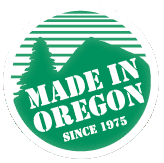
Made in Oregon is a private company founded in Portland, Oregon, United States in 1975 by Portland businessman Sam Naito. The company is a gift retailer that specializes in Oregon-made products. It was originally owned by Norcrest China Company, an import business co-owned by Sam Naito and his brother Bill Naito, until Norcrest was reorganized as H. Naito Corporation in 1992.
Norm Thompson Outfitters was a privately owned catalog and internet retailer based in Middleton, Massachusetts that was previously based in Hillsboro, Oregon, United States until September 2016. The Norm Thompson offices were closed and consolidated due to Bluestem's acquisition of their parent company, Orchard Brands, in July 2015. Founded in 1949 by Norman A. (Norm) Thompson as a mail order business, it grew to annual sales of $200 million before it was sold to Golden Gate Capital Partners in 2006. The company sells clothing, gadgets, furniture, kitchen items, and gift items from its namesake catalog as well as from its Solutions and Sahalie brands. John Difrancesco serves as president and chief executive of the 500 employee company.

Virginia Cafe, sometimes known colloquially as "VC", is a restaurant and bar in Portland, Oregon.
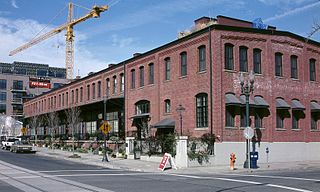
The North Bank Depot Buildings, in central Portland, Oregon, United States, are a pair of buildings formerly used as a freight warehouse and passenger terminal for the Spokane, Portland and Seattle Railway (SP&S). Formed in 1905, the SP&S was commonly known as the North Bank Road during the period in which these buildings were in use. The Portland buildings' passenger facilities were also used by the Oregon Electric Railway after that railway was acquired by the SP&S. Located in what is now known as the Pearl District, the buildings were listed on the National Register of Historic Places in 1996. They were in use by the SP&S and its successor, Burlington Northern Railroad, from 1908 until the 1980s. Only the east building was used as a passenger station, and this usage lasted from 1908 until 1931.
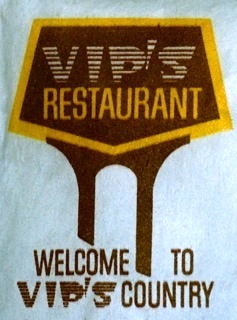
VIP's, alternatively written Vip's, is a defunct restaurant chain in the Western United States that operated from 1968 until the late 1980s, based in Salem, Oregon. With more than 50 locations, it was once the largest restaurant chain based in Oregon. It was a Denny's-style restaurant, a type that was commonly known at that time as a "coffee shop" but is now more commonly known as a casual dining restaurant. Most restaurants were located near freeways and were open 24 hours. At its peak, the chain had locations in five states: Oregon, Washington, Idaho, Nevada and northern California.
Sawyer's, Inc. was an American manufacturer and retailer of slide projectors, scenic slides, View-Master reels and viewers, postcards, and related products, based in Portland, Oregon. Founded in 1914 as a photo-finishing company, Sawyer's began producing and selling View-Masters in 1939, and that soon became its primary product. It later diversified into other photographic products, mostly related to film transparencies, and established manufacturing plants in Europe, Japan and India. By the early 1960s, Sawyer's was the nation's second-largest manufacturer of slide projectors, and by 1965 slide projectors had surpassed View-Master reels and equipment as a percentage of the company's annual sales. In 1951, the company moved from Portland proper to the unincorporated Progress area in Portland's southwestern suburbs. In 1966, Sawyer's was acquired by New York-based General Aniline & Film (GAF), and its product lines and facilities were taken over by GAF. It was a subsidiary company of GAF until 1968, when it became simply a division of that company, renamed the GAF Consumer Photo Division. For several years thereafter, GAF used "Sawyer's" as a brand name for its slide projectors.
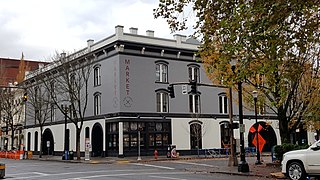
The United Carriage and Baggage Transfer Building is an historic building in Portland, Oregon's Old Town Chinatown neighborhood, completed in 1886. It is a contributing property in the Portland Skidmore/Old Town Historic District, which was listed on the U.S. National Register of Historic Places in 1975 and designated a National Historic Landmark District in 1977. Its ground floor currently houses the Pine Street Market.

Macheezmo Mouse was a fast food Mexican restaurant chain based in the U.S. state of Oregon.

Lucier was a European restaurant in Portland, Oregon. The business, which was described as "the most opulent restaurant space in Portland history", operated for seven months in 2008. News outlets described the failed venture as "the most colossal faceplant in Portland dining history" and the city's "greatest restaurant boondoggle". Lucier was the only restaurant in Oregon the American Automobile Association awarded with four diamonds.
Fenouil was a French and Pacific Northwest restaurant in Portland, Oregon. The business operated from 2005 to 2011.























